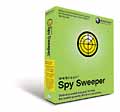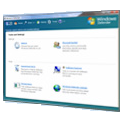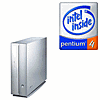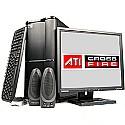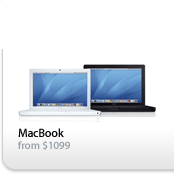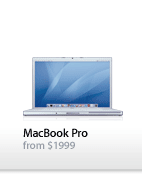- Antispyware Utilities
- Which Antivirus software is the best cure?
- Need a budgeted System built?
- We build Dream Machines.
- What is RAM anyway?
- Hard Drives
- DVD Combo Drives
- Blu-ray is here
- Apple Products
Antispyware Utilities
Some antispyware utilities are fast; some are slow. Some are free; some cost money. Some rely on manual scans only; others offer around-the-clock monitoring. When it comes to antispyware utilities, choosing the best one is largely a matter of deciding what youíre willing to sacrifice.
Back to Top
Antivirus Utilities
Without a doubt, the most significant software PC users can own today is an antivirus utility. It protects the MBR (master boot record; a record of how data is organized on the hard drive), the OS (operating system), other software , and data files from the various modes of destruction committed by viruses, worms, and Trojan horses.
Fortunately, the reputable antivirus utilities on the market today do a remarkable job of monitoring systems for suspicious activity and eliminating whatever threats they find. Most operate behind the scenes, making noticeable appearances only when Windows starts up or an incoming file triggers a real-time scan. Other similarities include intuitive interfaces, lengthy waits during full system scans, nonexistent users manuals, and a lack of free tech support. Nevertheless, each one has a unique character that makes it attractive to a particular segment of the market.
When it comes to choosing an antivirus utility, all of the aforementioned utilities do an adequate job of protecting a system from network-borne threats. NOD32 Antivirus 2007 receives our Smart Choice designation because we felt it offered the most complete package: effortless setup, intuitive interface, plenty of features, and a reasonable price. But usability is often in the eye of the beholder, and for this reason, we encourage you to take advantage of free trial periods before investing in one program over another.
Back to Top
Need a budgeted PC?
Budget PCs. You donít need graphics muscle to shop or pay bills online, nor do you need a particularly heavy-duty rig to perform basic word processing and spreadsheet tasks. That said, almost any PC will benefit from a newer dual-core processor that can handle multiple applications better than single-core counterparts. Dual-core CPUs are too new to be cheap yet, so we placed the upper price limit for our budget systems at $1,500, but insisted on dual-core CPUs. We will focus on non-gaming performance and quality features. Our Creative Builders will cook up some excellent home-office systems, while others create all-play-and-no-work rigs.
Back to Top
We build Dream Machines
Dream PCs. If you weigh only a systemís price against its performance when shopping, youíre not looking for a dream PC. All the systems in this category are powerful, but most also have tons of extras that drive up the price without adding points to benchmark scores. Luxury system builders pay special attention to aesthetics and look beyond function. Rather than just tucking cables out of the systemís airflow. For example, many builders carefully hide extra wires and fold or tie them. Luxury systems often have anodized metal cases or sport automotive paint. Our Creative Team has been asked before to build systems priced more than $3,000 and that will make a gamerís knees weak.
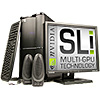
Back to Top
What is RAM anyway?
Maybe it has something to do with standardization. After all, how do you choose one DDR400 kit over another if they both offer 2-2-2-5 timings and center on the same IC manufacturerís silicon under the hood? Some vendors use flashy heat spreaders for attention. Others prefer LED lighting. Lifetime warranties are pretty much standard now, too.
Most power users know memory performance is determined partly by operating frequency and partly by timings. What most folks donít consider, though, is that increasing capacity can also help boost speed, just as too little will hurt you. Memory capacity wonít speed things up uniformly; it will only help in those apps with memory-usage patterns exceeding the hardware youíve installed. Alternatively, if you play games with three Microsoft Word documents open, 15 browser windows, and a half-finished Photoshop project, adding RAM may help de-emphasize the memory footprints of those idling apps.
Incidentally, games are getting more demanding, not less so. And with Vista on the horizon, you can expect system requirements to begin a deliberate march north. Memory vendors are seeing a demand for larger kits. Theyíre testing the latest games and realizing marked performance improvements at the hands of higher capacities.



.
Back to Top
Hard Drives
Need some more elbow room? Say what you want about the rest of the world, but where hard drives are concerned, your dollar goes further every year. Prices keep dropping, and capacities keep growing. Howís a full terabyte (1TB, or roughly 1,000GB) at 40 cents per GB sound to you?
There are two schools of thought in buying a new hard drive these days. One is to buy the speediest drive available, which for the last few years has meant one of Western Digitalís 10,000rpm Raptors. The other is to get a lot more capacity for the dollar with a decent 7,200rpm drive.
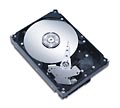
Back to Top
DVD Disk Drive
A straight-up benchmark brawl is all well and good, but the real question to ask before buying a DVD burner is how compatible will it be with home DVD players? Is one format better than another? Are cheaper discs as good as name-brand media? We didn't want to take anyone's word for it; we wanted to see for ourselves. We selected eight brands of media for testing. Five are household names; the other three are hot sellers under the radar. Call us to get more details.

Back to Top
Blu-ray is here
Movies, TV shows, music, images, and games are big files that everyone wants to use. Hard drives today canít be big enough, nor your files secure enough..
Like its competitors, Plextorís Blu-ray disc drive for the PC is basically a DVD burner on steroids, writing up to 50GB on one disc. And in the age of HD camcorders and 750GB hard drives that need backing up, itís just what you need.

Back to Top
Apple Products
Movies, TV shows, music, images, and games that everyone wants to use.
Like its competitor?
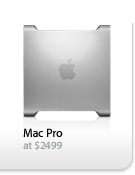
Back to Top
